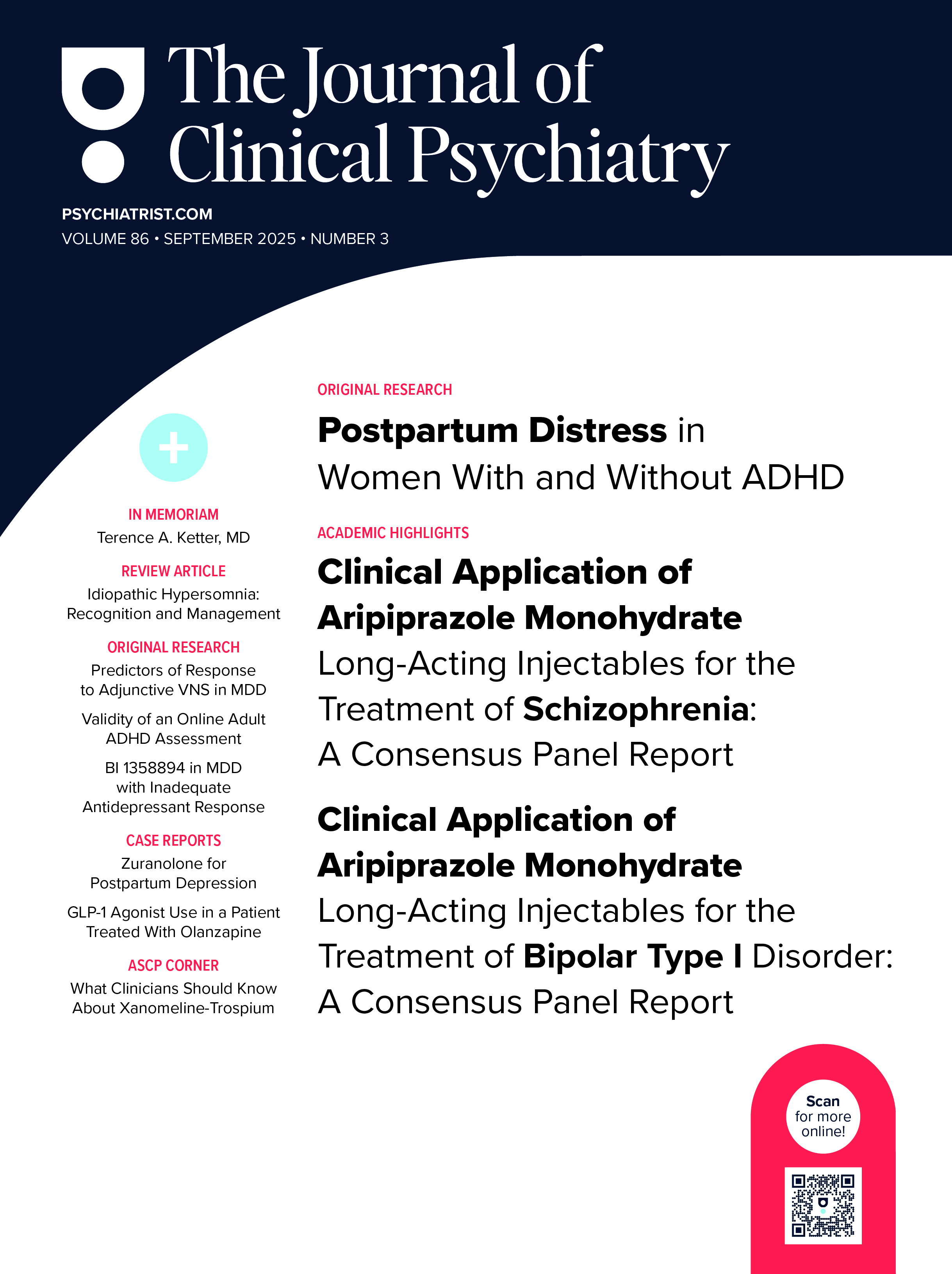Find more articles on this and other psychiatry and CNS topics:
The Journal of Clinical Psychiatry
The Primary Care Companion for CNS Disorders
Background: Adverse cutaneous reactions (ACRs) are common, potentially life-threatening or symptomatically and cosmetically unappealing side effects of psychotropic drugs.
Data Sources: A MEDLINE search of the literature was employed to cite the association of various psychotropic drugs with specific cutaneous reactions.
Data Synthesis: In addition to the common exanthematous eruption, we explore several serious reactions including erythema multiforme, Stevens-Johnson syndrome, toxic epidermal necrolysis, urticaria, angioedema, anaphylaxis, hypersensitivity syndrome, hypersensitivity vasculitis, erythroderma, and drug-induced lupus erythematosus. Other side effects such as alopecia, pigmentary disorders, photosensitivity, lichenoid lesions, fixed drug eruptions, and psoriasiform, acneiform, and seborrheic eruptions are discussed. Attention is paid to the morphology and distribution, systemic findings, diagnosis, and treatment of these conditions.
Conclusion: Awareness of ACRs will allow psychiatrists to deter their continuation or recurrence, educate patients who have them, and diagnose serious instances of them.
Members Only Content
This full article is available exclusively to Professional tier members. Subscribe now to unlock the HTML version and gain unlimited access to our entire library plus all PDFs. If you’re already a subscriber, please log in below to continue reading.
Please sign in or purchase this PDF for $40.00.
Already a member? Login




